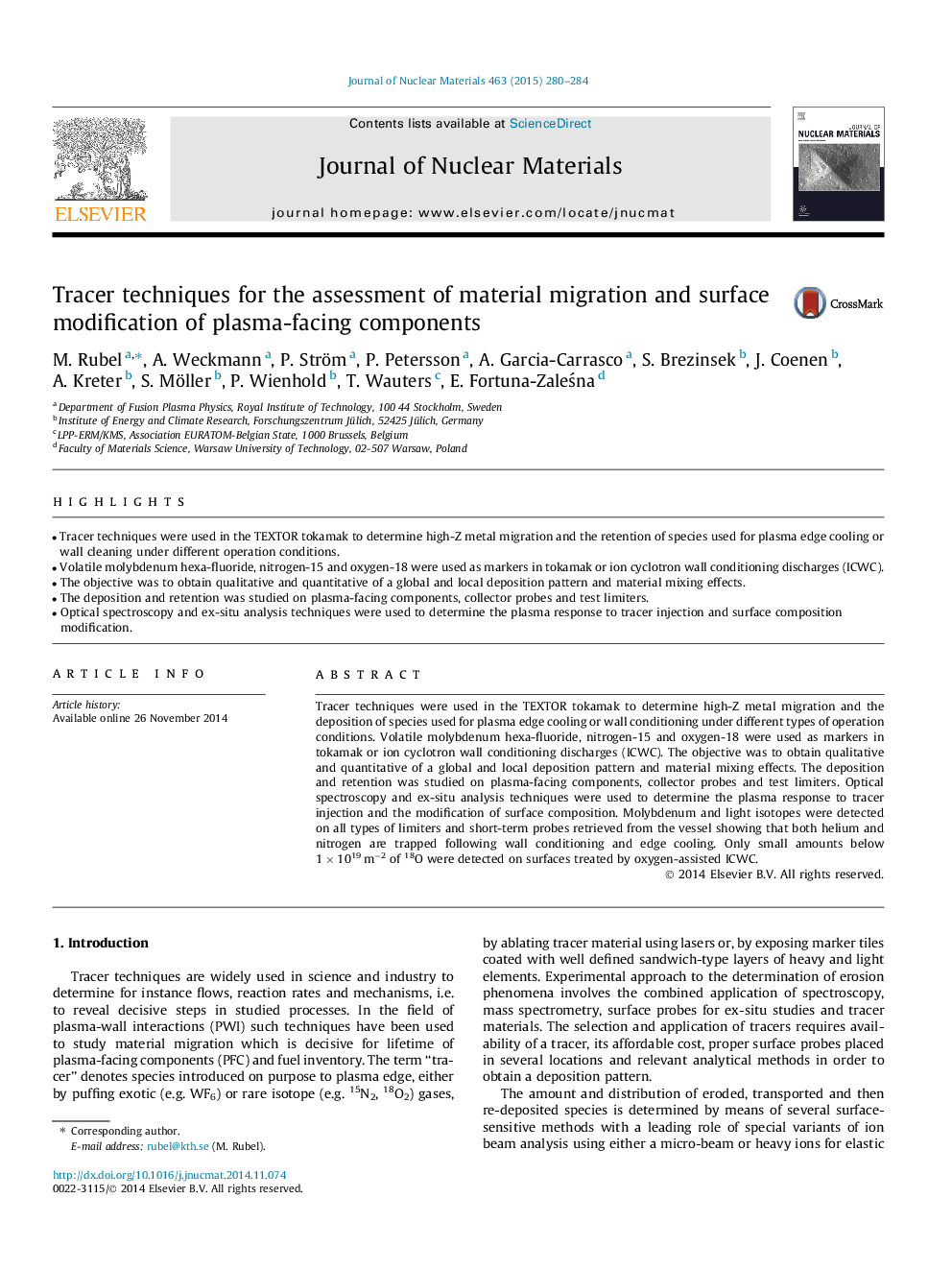| Article ID | Journal | Published Year | Pages | File Type |
|---|---|---|---|---|
| 7965711 | Journal of Nuclear Materials | 2015 | 5 Pages |
Abstract
Tracer techniques were used in the TEXTOR tokamak to determine high-Z metal migration and the deposition of species used for plasma edge cooling or wall conditioning under different types of operation conditions. Volatile molybdenum hexa-fluoride, nitrogen-15 and oxygen-18 were used as markers in tokamak or ion cyclotron wall conditioning discharges (ICWC). The objective was to obtain qualitative and quantitative of a global and local deposition pattern and material mixing effects. The deposition and retention was studied on plasma-facing components, collector probes and test limiters. Optical spectroscopy and ex-situ analysis techniques were used to determine the plasma response to tracer injection and the modification of surface composition. Molybdenum and light isotopes were detected on all types of limiters and short-term probes retrieved from the vessel showing that both helium and nitrogen are trapped following wall conditioning and edge cooling. Only small amounts below 1Â ÃÂ 1019Â mâ2 of 18O were detected on surfaces treated by oxygen-assisted ICWC.
Related Topics
Physical Sciences and Engineering
Energy
Nuclear Energy and Engineering
Authors
M. Rubel, A. Weckmann, P. Ström, P. Petersson, A. Garcia-Carrasco, S. Brezinsek, J. Coenen, A. Kreter, S. Möller, P. Wienhold, T. Wauters, E. Fortuna-ZaleÅna,
